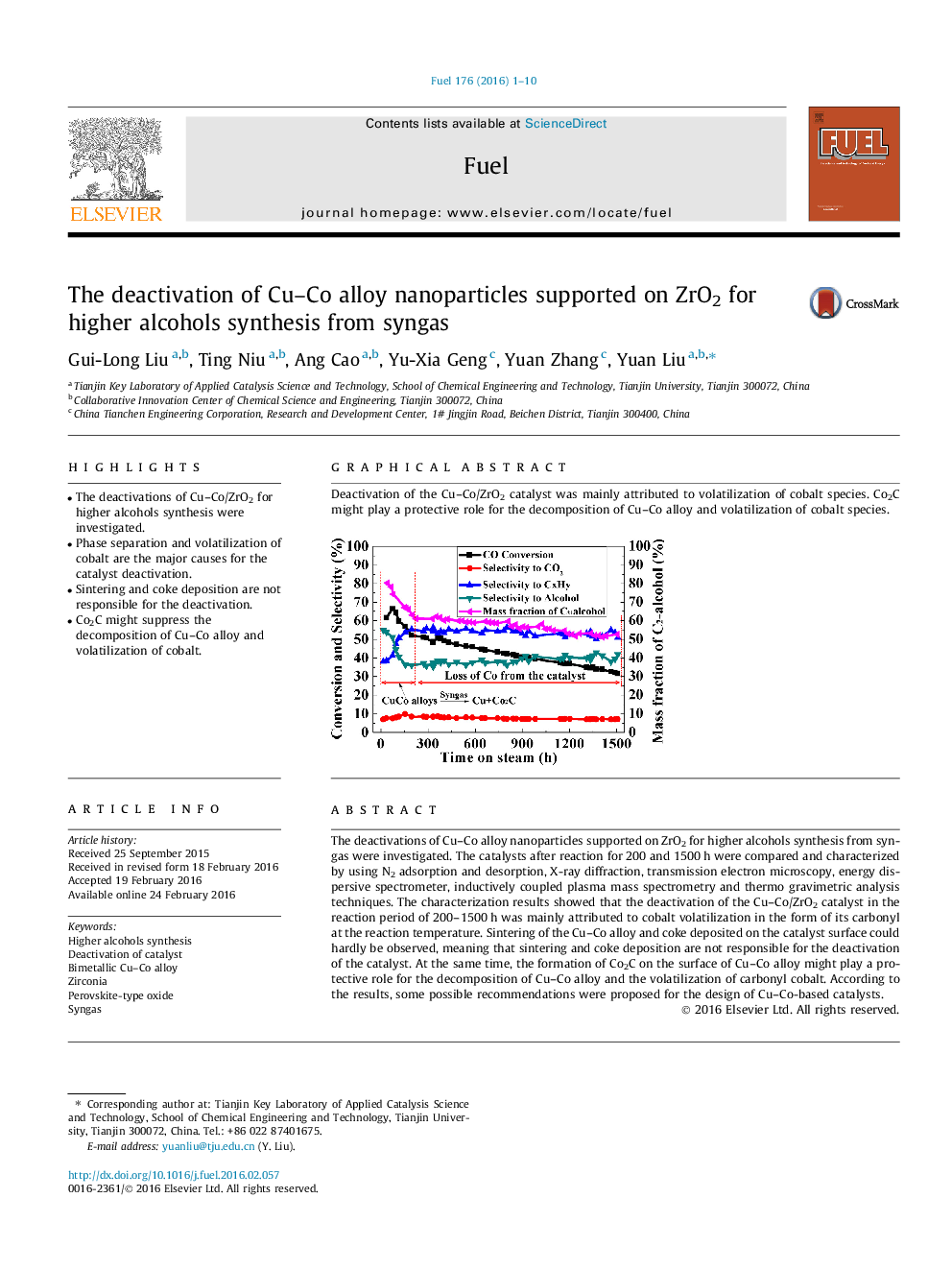| Article ID | Journal | Published Year | Pages | File Type |
|---|---|---|---|---|
| 205151 | Fuel | 2016 | 10 Pages |
•The deactivations of Cu–Co/ZrO2 for higher alcohols synthesis were investigated.•Phase separation and volatilization of cobalt are the major causes for the catalyst deactivation.•Sintering and coke deposition are not responsible for the deactivation.•Co2C might suppress the decomposition of Cu–Co alloy and volatilization of cobalt.
The deactivations of Cu–Co alloy nanoparticles supported on ZrO2 for higher alcohols synthesis from syngas were investigated. The catalysts after reaction for 200 and 1500 h were compared and characterized by using N2 adsorption and desorption, X-ray diffraction, transmission electron microscopy, energy dispersive spectrometer, inductively coupled plasma mass spectrometry and thermo gravimetric analysis techniques. The characterization results showed that the deactivation of the Cu–Co/ZrO2 catalyst in the reaction period of 200–1500 h was mainly attributed to cobalt volatilization in the form of its carbonyl at the reaction temperature. Sintering of the Cu–Co alloy and coke deposited on the catalyst surface could hardly be observed, meaning that sintering and coke deposition are not responsible for the deactivation of the catalyst. At the same time, the formation of Co2C on the surface of Cu–Co alloy might play a protective role for the decomposition of Cu–Co alloy and the volatilization of carbonyl cobalt. According to the results, some possible recommendations were proposed for the design of Cu–Co-based catalysts.
Graphical abstractDeactivation of the Cu–Co/ZrO2 catalyst was mainly attributed to volatilization of cobalt species. Co2C might play a protective role for the decomposition of Cu–Co alloy and volatilization of cobalt species.Figure optionsDownload full-size imageDownload as PowerPoint slide
